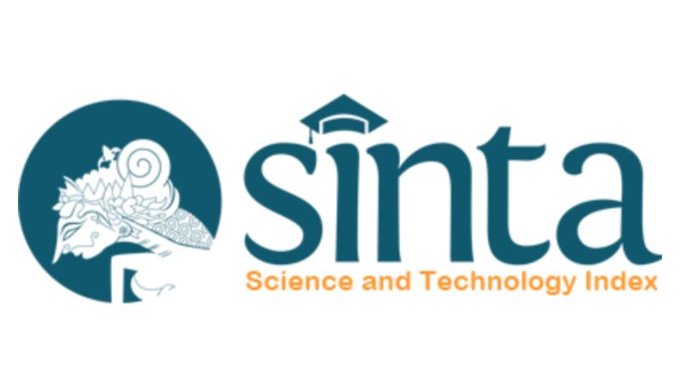Conservative Management for Anterior STEMI Complicated by Ventricular Septal Rupture
DOI:
https://doi.org/10.55175/cdk.v46i3.498Kata Kunci:
Conservative management, hemodynamic pertubation, myocardial infarction, ventricular septal ruptureAbstrak
Ventricular septal rupture is a rare complication of acute myocardial infarction but with a very high mortality, most often caused by severe hemodynamic failure. Conservative treatment is very inefficient with over 90% mortality rate; surgery is recommended as definitive treatment. A case of 67-year-old woman with chest pain since 1 day accompanied by shortness of breath and diaphoresis. Cardiac auscultation showed a 3/6 systolic murmur without thrill. ST elevation at the anterior lead was found in ECG. Echocardiography detected a rupture in interventricular septal with left-to-right shunt. The patient was diagnosed with anterior ST elevation myocardial infarction (STEMI) complicated by ventricular septal rupture. A conservative management was given without intra-aortic balloon pump placement and surgical operation due to patient’s rejection. One month post treatment, the patient exhibited a relatively stable hemodynamic with moderate to severe activity limitation.
Ruptur septum ventrikel merupakan komplikasi infark miokard akut yang jarang, namun mortalitasnya sangat tinggi, paling sering karena kegagalan hemodinamik berat. Penanganan konservatif sangat tidak efisien dengan tingkat kematian lebih dari 90 %; intervensi bedah direkomendasikan menjadi tatalaksana definitif. Seorang wanita 67 tahun mengeluh nyeri dada sejak 1 hari disertai sesak nafas dan diaforesis. Auskultasi jantung menunjukkan bising sistolik 3/6 tanpa thrill. EKG mendapatkan elevasi segmen ST di sadapan anterior. Pada ekokardiografi ditemukan ruptur septum ventrikel dengan left-to-right shunt. Pasien didiagnosis infark miokard akut elevasi ST anterior dengan ruptur septum ventrikel. Manajemen konservatif tanpa pemasangan intra-aortic balloon pump ataupun tindakan operatif karena pasien menolak. Satu bulan pasca-perawatan, hemodinamik relatif stabil dengan keterbatasan aktivitas sedang-berat.
Unduhan
Referensi
Birnbaum Y, Fishbein M, Blanche C, Siegel R. Venticular septal rupture after acute myocardial infarction. N Engl J Med. 2002 ; 347(18):1426–32
Jones B, Kapadia S, Smedira N, Robich M, Tuzcu E, Menon V, et al. Ventricular septal rupture complicating acute myocardial infarction: A contemporary review. European Heart Journal. 2014; 35:2060–8. doi:10.1093/eurheartj/ehu248
Moreyra AE, Huang MS, Wilson AC, Deng Y, Cosgrove NM, Kostis JB, MIDAS Study Group. Trends in incidence and mortality rates of ventricular septal rupture during acute myocardial infarction. The American journal of cardiology. 2010;106(8):1095-100.
Menon V, Webb JG, Hillis LD, Sleeper LA, Abboud R, Dzavik V, et al, Forman R, Monrad ES, Talley JD, Hochman JS. Outcome and profile of ventricular septal rupture with cardiogenic shock after myocardial infarction: a report from the SHOCK Trial Registry. Journal of the American College of Cardiology. 2000; 36(3):1110-6.
Crenshaw BS, Granger CB, Birnbaum Y, Pieper KS, Morris DC, Kleiman NS, et al. Risk factors, angiographic patterns, and outcomes in patients with ventricular septal defect complicating acute myocardial infarction. Circulation. 2000; 101(1):27-32.
Poulsen SH, Præstholm M, Munk K, Wierup P, Egeblad H, Nielsen-Kudsk JE. Ventricular septal rupture complicating acute myocardial infarction: clinical characteristics and contemporary outcome. The Annals of thoracic surgery. 2008;85(5):1591-6.
Noguchi K, Yamaguchi A, Naito K, Yuri K, Adachi H. Short-term and long-term outcomes of postinfarction ventricular septal perforation. General thoracic and cardiovascular surgery. 2012;60(5):261-7.
Su W, Wang S, Wang J, Zhang J, Chen Y, Wang G, Zhang A. Acute myocardial infarction complicated with ventricular septal rupture: Report of three cases. Cardiology Research. 2013;4(6):203.
López-Sendón J, Gurfinkel EP, Lopez de Sa E, Agnelli G, Gore JM, Steg PG, et al, Global Registry of Acute Coronary Events (GRACE) investigators. Factors related to heart rupture in acute coronary syndromes in the Global Registry of Acute Coronary Events. European heart journal. 2010 ;31(12):1449-56.
O’Gara PT, Kushner FG, Ascheim DD, Casey DE, Chung MK, De Lemos JA, et al. ACCF/AHA guideline for the management of ST-elevation myocardial infarction. Journal of the American College of Cardiology. 2013;61(4):78-140.
Liebelt JJ, Yang Y, DeRose JJ, Taub CC. Ventricular septal rupture complicating acute myocardial infarction in the modern era with mechanical circulatory support: A single center observational study. American journal of cardiovascular disease. 2016;6(1):10.
Kamishirado H, Inoue T, Sakai Y, Matsunaga R, Morooka S. Six-year survival of unoperated ventricular septal rupture following myocardial infarction. Texas Heart Institute Journal. 1999;26(4):315.
Rothfeld EL, Zucker IR, Parsonnet V. Postinfarction ventricular septal defect and the Eisenmenger syndrome. Chest. 1972 ;62(2):224-6.
Unduhan
Diterbitkan
Cara Mengutip
Terbitan
Bagian
Lisensi
Hak Cipta (c) 2019 https://creativecommons.org/licenses/by-nc/4.0/

Artikel ini berlisensi Creative Commons Attribution-NonCommercial 4.0 International License.





















